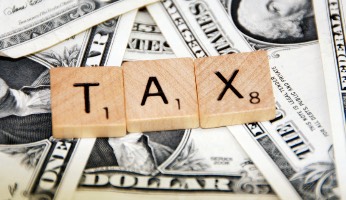Summary
In this lesson, students discover what tax dollars are used for and evaluate which tax-funded community services they feel are important. These services include libraries, police and fire departments, roads, water/sanitation services, and schools.
Essential Question(s)
How are taxes and community services connected?
Snapshot
Engage
Students compare and contrast two pictures of playgrounds, one well-maintained and one not.
Explore
Students rotate through community services stations and explain what they believe the community gains from each service.
Explain
Students use a modified Claim, Evidence, Reasoning (CER) strategy to make a connection between taxes and services by providing three evidence statements supporting their claim that taxes are needed for the community service they've chosen.
Extend
Students work with an Elbow Partner to argue for the importance of one of the services they believe should be funded with tax dollars.
Evaluate
Students complete an Exit Ticket to answer the question "How are taxes and community services connected?".
Materials
Butcher paper
One copy each of the six community services posters: Schools, Fire Department, Police Station, Libraries, Roads, and Sanitation and Water
Copies of the "Why are Taxes Needed for Community Services?" Claim, Evidence, Reasoning (CER) strategy sheets
Copies of the "Why are Taxes Important to Towns?" Exit Tickets, printed and cut in half
"Why are Taxes Important?" teacher slides
Engage
To begin the lesson, show slide 3. The slide shows two pictures of playgrounds. One playground is well-maintained, while the other is not.. The slide shows two pictures of playgrounds. One playground is well-maintained, while the other is not.
Lead the class through an I Notice, I Wonder activity to compare and contrast the playgrounds. Draw a T-Chart on the board. Label the left side of the T-Chart “I Notice” and the right side “I Wonder”. Ask the students, “What do you notice about the two pictures?”. Write the students’ answers on the chart. Then ask the class, “What do you wonder about the two pictures?” and write these answers on the chart.. The slide shows two pictures of playgrounds. One playground is well-maintained, while the other is not.
Next, ask the class, “Which playground would you like to play on?”. Lead a whole-class discussion about the money needed to maintain the parks.
Explore
Break students into six groups to complete a station activity. Students will rotate through the following six stations: Libraries, Police Departments, Fire Departments, Department of Transportation/Roads, Water and Sanitation, and Schools. At each station, students will use a modified version of the Chain Notes strategy to write on the butcher paper what they believe the community gains from the service.
After the students have visited each station, post the butcher paper around the room. Students will then complete a Gallery Walk to view what their classmates have written on each piece of butcher paper.
Explain
Show slide 4, which includes a picture of a receipt. Tell the students, ”I went to the store and bought a banana. It was only .39 cents but I had to pay .41 cents. I looked on my receipt and it said the extra money that I paid was for sales tax. Why are taxes needed for community services?”
Pass out a copy of the Claim and Evidence Notes Sheet to each student. Students will use a modified version of a Claim, Evidence, Reasoning (CER) strategy to make a claim stating why taxes are needed for community services and support their claim with three evidence statements. Students can refer to the butcher paper posters from the Explore phase to find more ideas for evidence to support their claim.
Extend
Show slide 5. Ask students to pretend that your class is a township. The town’s name can your last name plus “-ville.” For example, Mr. Allen’s class is Allenville. Feel free to customize the slide with your own town name.
Explain that the township has collected tax funds for the year. Now, the town must decide which services to provide for the following year.
Using the Elbow Partner strategy, have students form pairs with someone sitting nearby. Each pair will choose one of the services from the stations and provide an argument as to why that service is important for the town to fund.
After giving pairs a few minutes to discuss, call on some of the pairs to present their arguments for why their township should continue to fund the service they chose.
Evaluate
Pass out an Exit Ticket half sheet to each student. Ask the students to answer the guiding question, “Why are taxes important to your town?”
Resources
K20 Center. (n.d.). Bell ringers and exit tickets. Strategies. Retrieved from https://learn.k20center.ou.edu/strategy/d9908066f654727934df7bf4f505d6f2
K20 Center. (n.d.). Chain Notes. Strategies. Retrieved from https://learn.k20center.ou.edu/strategy/35a5bccee1c44ebf071d3692000084a0
K20 Center. (n.d.). Claim, evidence, reasoning (CER). Strategies. Retrieved from https://learn.k20center.ou.edu/strategy/d9908066f654727934df7bf4f506fc09
K20 Center. (n.d.). Elbow partners. Strategies. Retrieved from https://learn.k20center.ou.edu/strategy/ccc07ea2d6099763c2dbc9d05b00c4b4
K20 Center. (n.d.). Gallery walk / carousel. Strategies. Retrieved from https://learn.k20center.ou.edu/strategy/d9908066f654727934df7bf4f505a54d
K20 Center. (n.d.). I notice, I wonder. strategies. Retrieved from https://learn.k20center.ou.edu/strategy/d9908066f654727934df7bf4f507d1a7


